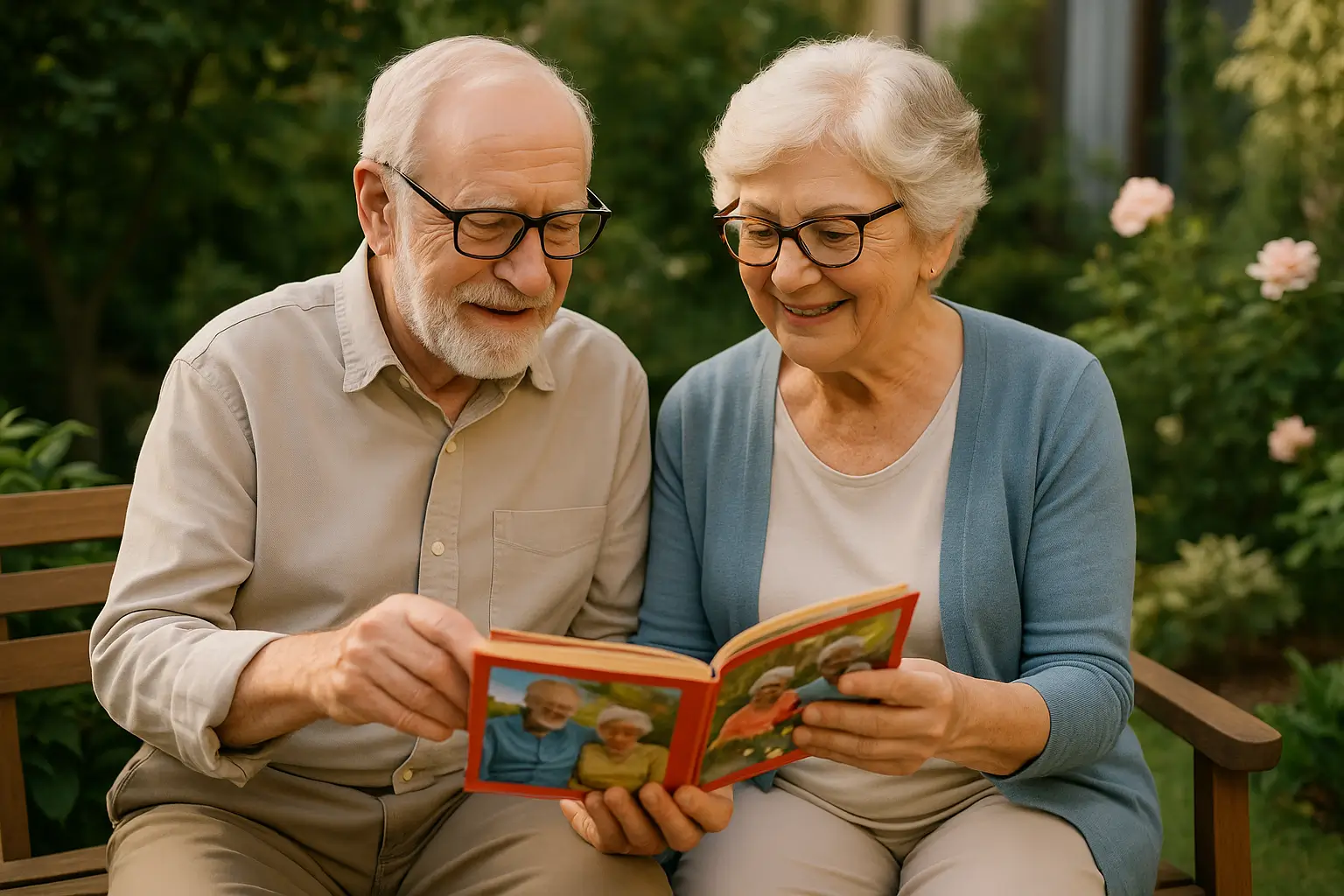
Highlights:

Growing older brings many changes to our bodies, including our eyesight. For those over 65, understanding which vision changes are a normal part of aging versus those that might indicate something more serious is key to maintaining independence and quality of life.
The good news? Many age-related vision changes are manageable with proper care and awareness. Let’s look at what you can expect as your eyes age, how to manage these changes effectively, and when you should consult an eye doctor right away.
As we get older, several natural changes occur in our eyes. The lens of the eye becomes less flexible, the retina doesn’t detect light as well as it once did, and the muscles that control focusing grow weaker. These physical changes cause noticeable differences in how we see the world around us.
Many people worry these changes mean something is wrong, but often they’re just part of aging. Understanding this can reduce anxiety and help you adapt more easily.
After age 40, most people begin to notice they can’t focus on close objects as easily. This condition, called presbyopia, affects nearly everyone as they age. By age 60, this vision problem has typically progressed significantly. You might notice:
Reading glasses, bifocals, or progressive lenses can address these issues, letting you continue enjoying your favorite books and hobbies without frustration. If you’re also experiencing unusual sleep patterns along with vision changes, these might be connected. You can learn more about sleep issues in older adults and how they might relate to eye health.
Have you found yourself turning on extra lamps lately? As aging eyes need more light to see clearly, you might experience:
Adding brighter lighting in your home and using glasses with anti-glare coating can make a difference in your comfort and safety.
The way we perceive colors also changes with age. You might find:
These changes happen gradually, so you may not notice them until you compare how you see something with how a younger person sees it. Improving lighting can help compensate for some of these common vision changes.
Many older adults experience dry eye as tear production decreases with age. Signs of dry eye include:
Dry eye can often be managed with eye drops recommended by your eye care professional.
While many vision changes are harmless, some indicate more serious eye conditions that require medical attention. Getting regular eye exams becomes even more important after 60 years of age, as catching these conditions early can make a tremendous difference in treatment outcomes.
Age-related macular degeneration (AMD) affects the center of your retina, which is responsible for central vision. It’s a leading cause of vision loss in older adults. Watch for these warning signs:
Early detection through regular eye exams is crucial. Current treatments can slow progression and sometimes prevent severe vision loss, especially when caught early.
Cataracts form when the clear lens of the eye becomes cloudy. By age 75, more than half of Americans have either had cataracts or have had surgery to remove them. Signs include:
The good news? Cataract surgery is among the safest and most effective surgical procedures. It can restore good vision and dramatically improve quality of life.
Glaucoma damages the optic nerve, often due to increased pressure within the eye. It develops slowly and without pain, so regular screening is absolutely necessary. Be aware of:
Treatment can’t reverse damage but can prevent further vision loss, which makes early detection through regular eye examinations critical.
For people with diabetes, eye complications can arise as the disease affects blood vessels in the back of the eye. Signs include:
Good diabetes management combined with regular eye exams can significantly reduce the risk of developing eye disease that leads to permanent vision loss.
For those over age 50, eye health professionals typically recommend comprehensive eye exams every year or two, depending on your overall health and risk factors. These check-ups can:
Many eye problems develop painlessly and gradually, making professional screening the only way to detect them early. You can find more information about maintaining overall health as you age on our blog.
Your diet plays a surprising role in eye and vision health. Try to include:
These foods contain nutrients that help maintain good eye health and may slow the progression of certain age-related eye problems.
Simple changes at home can make seeing easier:
Working with an eye care professional to find the correct eyewear can dramatically improve your daily life:
Some changes in vision require prompt medical attention. Contact your eye doctor immediately if you experience:
These symptoms could indicate serious conditions that might lead to vision loss and blindness if not treated quickly. For comprehensive information about senior vision care, the American Optometric Association offers valuable resources.
Age-related vision changes are a normal part of getting older, and with the right knowledge and resources, you can continue enjoying your favorite activities and maintain your independence. Regular eye exams, appropriate eyewear, good lighting, and a healthy diet all contribute to preventing vision loss as you age.
Remember that many eye diseases develop without pain or obvious symptoms, making regular professional check-ups your best defense against serious vision problems. By staying informed about what’s normal and what’s not, you can take charge of your eye health and address concerns promptly.
Don’t let fear of vision changes keep you from doing what you love. With proper care and timely intervention when needed, you can maintain good vision for years to come.
If it’s been more than a year since your last comprehensive eye exam, now is the perfect time to schedule one. Your future self will thank you for taking this simple step toward preserving your precious sight and ensuring good vision and eye health throughout your later years.
